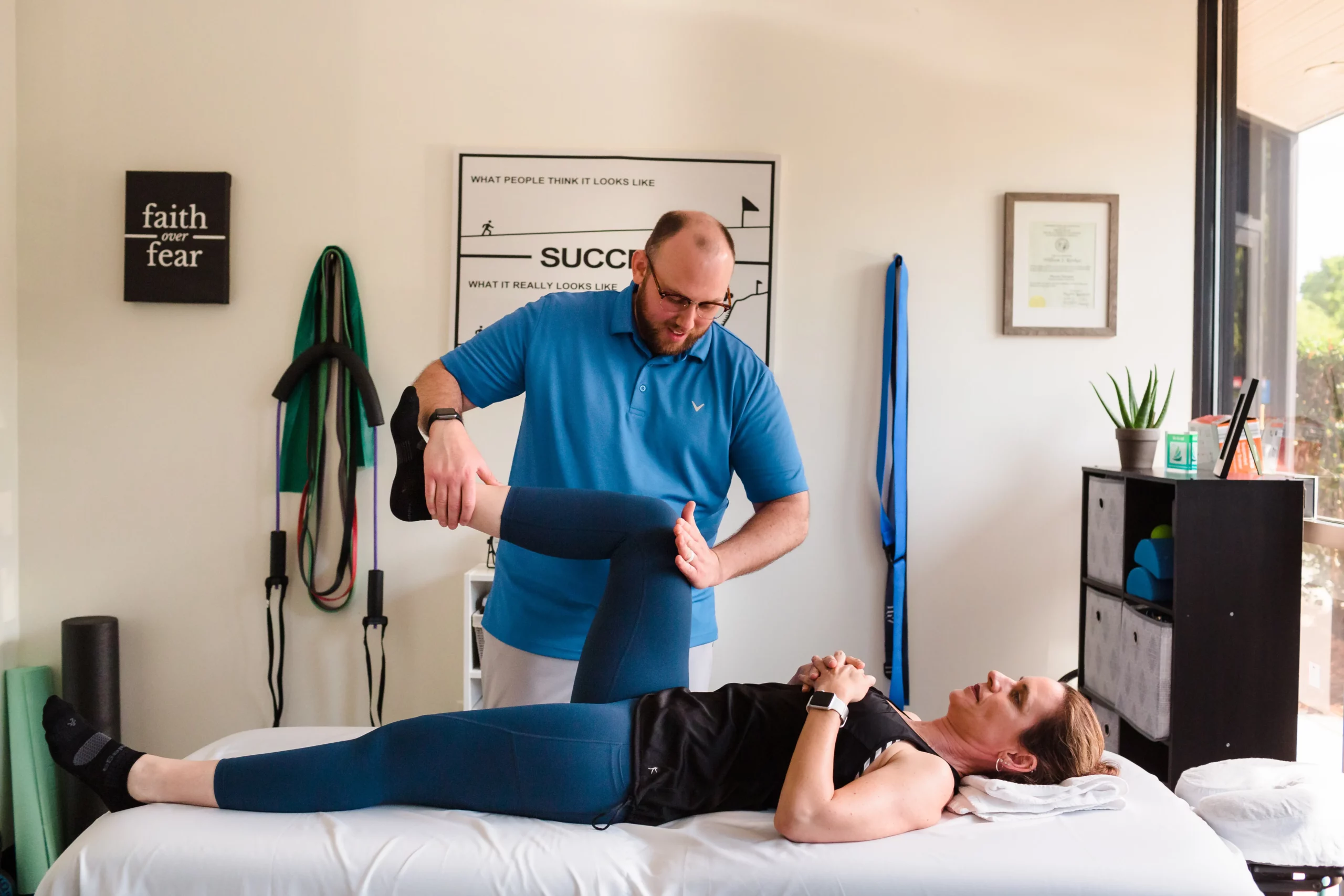Myotome Testing

A myotome, derived from the Greek words “myo” meaning muscle and “tome” meaning section or volume, refers to a collection of muscles that are innervated by a single spinal nerve root. When investigating radiculopathy, testing the myotomes is a crucial aspect of a neurological examination. Unlike dermatomes, myotomes pose a greater challenge during testing because each skeletal muscle receives innervation from nerves originating from multiple levels of the spinal cord.
Myotomes are an integral component of the somatic nervous system, which, in turn, is a division of the peripheral nervous system.
Spinal Nerves
The human body has a total of 31 spinal nerves, with each vertebra accommodating a spinal nerve. These nerves are classified according to the specific vertebrae they are associated with. To be more precise, there are 8 cervical nerves, 12 thoracic nerves, 5 lumbar nerves, 5 sacral nerves, and 1 coccygeal nerve. Among these 31 nerves, 16 of them correspond to particular myotomes responsible for regulating voluntary muscle movements.
Myotome Distribution
The majority of muscles in the limbs receive innervation from multiple spinal nerve roots, resulting in their composition from multiple myotomes. For example, the Biceps Brachii muscle plays a role in elbow flexion. Its innervation is provided by the musculocutaneous nerve, which, in turn, receives innervation from the C5, C6, and C7 nerve roots. Consequently, all three of these spinal nerve roots can be associated with the action of elbow flexion.
The following is a breakdown of the primary movement(s) associated with each myotome:
Upper Extremity:
- C5: Shoulder abduction.
- C6: Elbow flexion and wrist extension.
- C7: Elbow extension.
- C8: Thumb extension and wrist ulnar deviation.
- T1: Finger abduction
Chest wall and abdominal muscles:
- T2 – L1
Lower Extremity:
- L2: Hip flexion.
- L3: Knee extension.
- L4: Ankle dorsiflexion.
- L5: Big toe extension.
- S1: Ankle plantarflexion
- S2: Knee flexion.
Purpose
The examination of myotomes, conducted through isometric resisted muscle testing, provides valuable insights into the potential location of a lesion within the spine. By assessing myotomes, one can identify specific groups of muscles exhibiting weakness. The results obtained from such testing may indicate the presence of a lesion affecting the spinal cord nerve root or compression caused by intervertebral disc herniation affecting the spinal nerve roots. To assess the degree of muscle weakness, a muscle strength grading scale is commonly employed, which assigns ratings to quantify the extent of weakness.
The Technique
C5 – Shoulder abduction: Ask the patient to raise both arms to the side simultaneously with maximum strength while the examiner applies resistance to this motion. Compare the strength between both arms.
C6 – Elbow flexion & wrist extension: Evaluate the strength of forearm flexion by holding the patient’s wrist from above and instructing them to “bring their hand up towards their shoulder.” Apply resistance at the wrist. Repeat and compare with the opposite arm. This assesses the biceps muscle. Test wrist extension by requesting the patient to extend their wrist while the examiner opposes the movement. This evaluates the forearm extensors. Repeat the test with the other arm.
C7 – Elbow extension & wrist flexion: Prompt the patient to extend their forearm against resistance from the examiner. Initiate the extension from a fully flexed position as this phase is most sensitive to strength loss. This tests the triceps. Observe for any asymmetry in the opposite arm.
C8 – Finger flexion: Examine the patient’s hands, looking for signs of muscle wasting in the intrinsic hand, thenar, and hypothenar muscles. Evaluate grip strength by having the patient tightly hold the examiner’s fingers within their fist, while the examiner tries to remove them. Normally, the examiner cannot remove their fingers. This assesses the forearm flexors and intrinsic hand muscles. Compare the strength between the hands. Finger flexion is innervated by the C8 nerve root through the median nerve.
C8 – Finger abduction & adduction: Once again, assess the intrinsic hand muscles by instructing the patient to abduct or “spread out” all their fingers. Instruct the patient to resist the examiner’s attempt to bring the fingers back together. Normally, the patient can prevent the fingers from being compressed. Finger abduction or “fanning” is innervated by the T1 nerve root through the ulnar nerve.
C8 & T1 – Thumb opposition: To complete the motor examination of the upper extremities, test the strength of thumb opposition by instructing the patient to touch the tip of their thumb to the tip of their pinky finger. Apply resistance to the thumb using your index finger. Repeat the test with the other thumb and compare. Thumb opposition is innervated by the C8 and T1 nerve roots through the median nerve.
L1 & L2 – Hip Flexion: To assess hip flexion in the lower extremities, have the patient lie down and lift each leg individually while the examiner provides resistance. Repeat the test and compare with the other leg. This evaluates the iliopsoas muscles.
L3 – Knee Extension: Evaluate knee extension by placing one hand under the knee and the other on top of the lower leg to offer resistance. Instruct the patient to extend or “kick out” the lower leg at the knee. Repeat the test and compare with the other leg. This tests the quadriceps muscle.
L4 – Ankle Dorsiflexion: Test ankle dorsiflexion by gripping the top of the ankle and instructing the patient to pull their foot up toward their face with maximum effort. Repeat the test with the other foot. This assesses the muscles in the anterior compartment of the lower leg.
L5 – Great Toe Extension: Ask the patient to move the big toe upward toward their face against resistance from the examiner. This tests the extensor hallucis longus muscle.
S1 – Ankle Plantarflexion and Eversion/Knee Flexion: Hold the bottom of the foot and instruct the patient to press down as hard as possible or rise up onto the balls of their feet while standing. Repeat the test with the other foot and compare. This evaluates the gastrocnemius and soleus muscles in the posterior compartment of the lower leg.
S2 – Knee Flexion: Assess knee flexion by holding the knee from the side and applying resistance under the ankle. Instruct the patient to pull the lower leg toward their buttock with maximum force. Repeat the test with the other leg.
Clinical Relevance
Myotomes are primarily valuable in the clinical assessment of patients to comprehend the neurological deficit pattern following a complex nerve injury. By evaluating the affected myotomes, it becomes possible to localize the lesions to the level of the spinal nerve or trunk. This information aids in understanding the extent and specific areas of nerve injury and guides appropriate treatment and management strategies.


